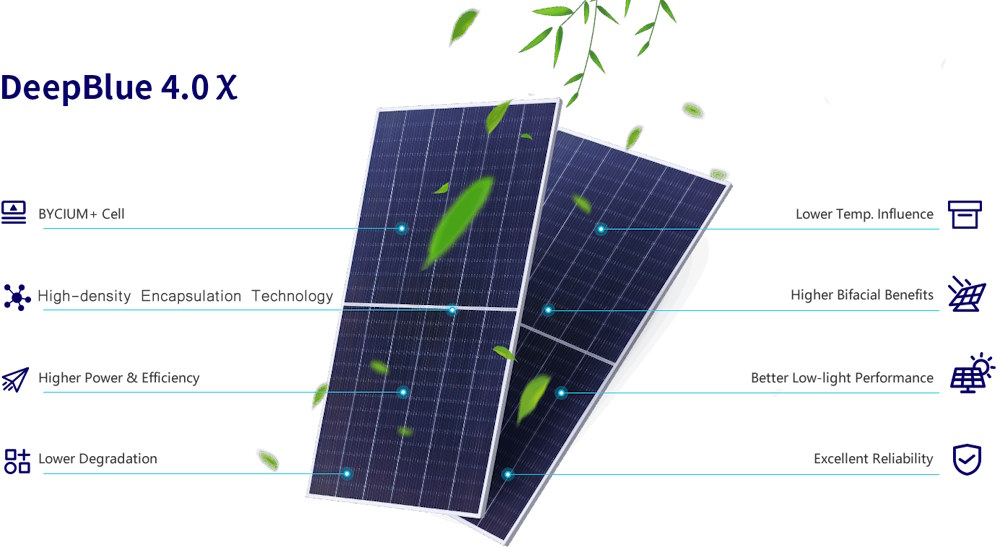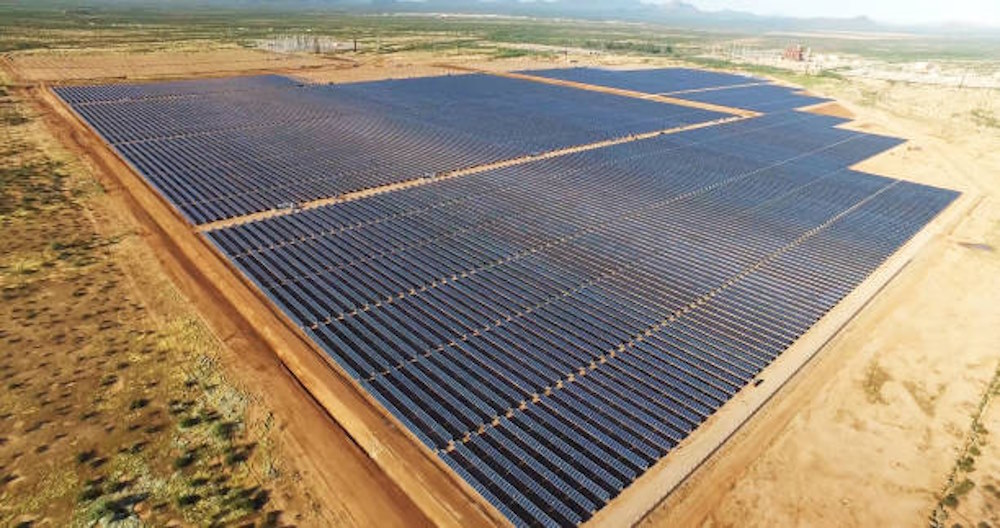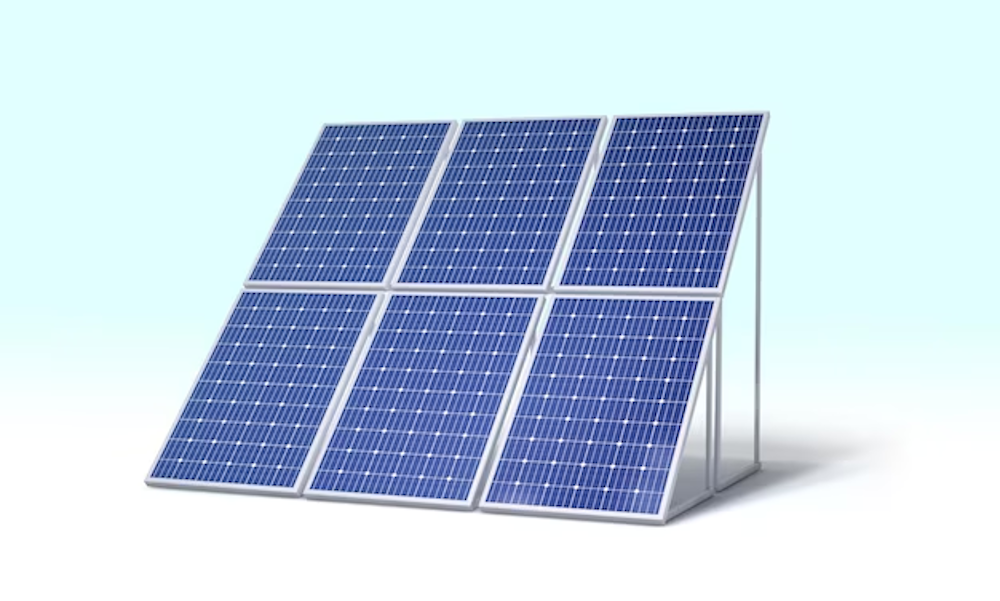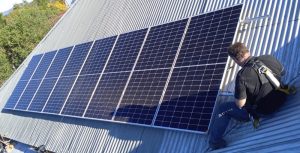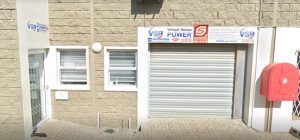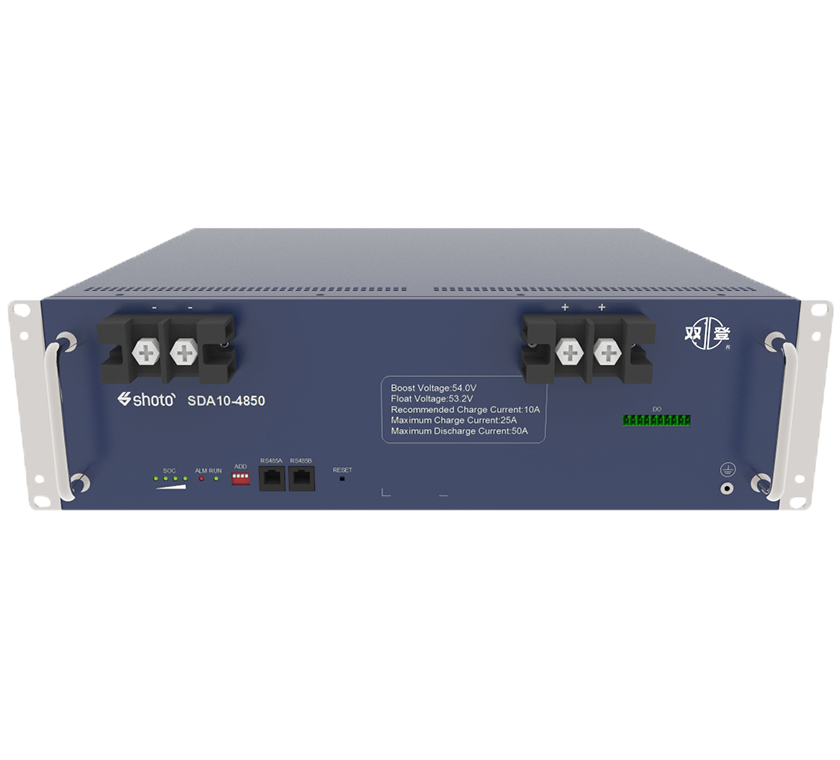1. Introduction
South Africa, a country blessed with abundant sunshine, is rapidly emerging as a solar energy hub in Africa. Solar energy has the potential to transform the nation’s energy landscape, providing sustainable and affordable electricity to both urban and rural areas. This definitive guide aims to explore the world of solar energy in South Africa, from its potential and advantages to the technologies, regulations, and challenges it faces. Solar power in South Africa, here we explore the potential of harnessing global solar energy resources and the benefits of solar PV power in the region.
2. The Solar Potential of South Africa
South Africa is endowed with an exceptionally high solar resource, making it an ideal location for solar energy production. The country receives an average of more than 2,500 hours of sunlight per year, with the highest solar radiation levels found in the Northern Cape province. This solar potential is a valuable resource that can be harnessed to meet the nation’s energy needs.
Here’s a detailed exploration of South Africa’s solar potential:
2.1 Abundant Sunlight:
South Africa enjoys an abundance of sunlight throughout the year, with an average of more than 2,500 hours of sunshine annually. This vast resource of solar radiation is distributed across the country, but certain regions, particularly the Northern Cape, experience some of the highest levels of solar irradiation in the world.
2.2 Geographic Diversity:
South Africa’s geographic diversity further enhances its solar potential. The country spans a wide range of latitudes and altitudes, providing various microclimates suitable for solar energy production. This diversity allows for solar installations to be optimized to capture sunlight effectively.
2.3 Favorable Climate:
The country’s climate is well-suited for solar energy generation. The majority of South Africa experiences sunny and clear skies, which is essential for maximizing solar panel efficiency. Even in coastal areas, where there may be some cloud cover, the solar potential remains substantial.
2.4 Seasonal Consistency:
South Africa’s climate features relatively consistent solar radiation levels throughout the year, minimizing the impact of seasonal variations. This consistency ensures a reliable and continuous source of solar energy, making it an ideal location for solar power generation.
2.5 Solar Energy Maps:
Extensive solar resource assessments and mapping have been conducted to identify the most favorable areas for solar installations. These solar resource maps provide valuable data for both small-scale and large-scale solar projects, enabling informed decisions regarding system design and location.
2.6 Rural Electrification:
South Africa has numerous remote and off-grid areas where electricity access is limited. Solar power offers an efficient and cost-effective solution for rural electrification, bringing much-needed electricity to these underserved communities.
2.7 Economic Opportunities:
The solar industry in South Africa has the potential to drive economic growth and job creation. The development, manufacturing, and installation of solar panels and related components can stimulate local economies and create employment opportunities.
2.8 Renewable Energy Goals:
The South African government has set ambitious renewable energy targets to reduce carbon emissions and increase energy security. These goals promote the expansion of solar power projects, both utility-scale and distributed, across the country.
2.9 PV power plants:
Utility scale solar PV power plants have gained significant traction in recent years, contributing substantially to the global shift towards renewable energy sources. These massive solar facilities boast impressive installed capacity, generating vast amounts of clean electricity. Utility scale solar PV power plants are pivotal in meeting the world’s growing energy demands while simultaneously reducing carbon emissions, making them a key player in the transition to a more sustainable and environmentally responsible energy landscape.
3. Advantages of Solar Power in South Africa
Solar power offers numerous advantages for South Africa:
- Energy Independence: Solar energy reduces reliance on fossil fuels and the grid, promoting energy independence.
- Cost Savings: Solar energy can significantly reduce electricity bills, leading to long-term cost savings.
- Clean Energy: Solar energy is a clean and renewable energy source, contributing to a greener environment.
- Rural Electrification: Solar energy can extend electricity access to remote and underserved areas.
- Job Creation: The solar industry can create employment opportunities and stimulate economic growth.
4. Solar Technologies and How They Work
This section explores various solar technologies, including photovoltaic (PV) solar panels and concentrating solar power (CSP) systems, and explains how they convert sunlight into electricity or heat.
Solar technologies are diverse and versatile, but they all share the common goal of harnessing the energy from the sun to produce electricity or heat. In this section, we’ll explore various solar technologies and how they work:
4.1 Photovoltaic (PV) Solar Panels:
Photovoltaic solar panels, often referred to as solar PV panels, are the most widely used solar technology for electricity generation. These panels are made up of multiple solar cells typically constructed from semiconductor materials, such as silicon. Here’s how they work:
- Absorption of Sunlight: When sunlight, composed of photons, strikes the solar panels, the semiconductor material absorbs these photons.
- Generation of Electric Current: The absorbed photons impart energy to electrons within the semiconductor material, causing them to become “excited” and move. This movement of electrons creates an electric current.
- Electricity Conversion: The electric current produced by the excited electrons is direct current (DC). An inverter is used to convert this DC electricity into alternating current (AC), which is the type of electricity used in homes and businesses.
- Distribution: The converted AC electricity is then distributed for immediate use within the building or sent to the grid for wider distribution.
PV solar panels are commonly found on rooftops, solar farms, and various other applications. They are highly efficient, scalable, and environmentally friendly.
4.2 Concentrating Solar Power (CSP) Systems:
Concentrating Solar Power systems use mirrors or lenses to concentrate sunlight onto a small area, typically a receiver, to generate heat. This heat is then used to produce electricity. There are different types of CSP systems:
- Parabolic Trough Systems: These systems use curved mirrors (parabolic troughs) to concentrate sunlight onto a receiver tube running along the focal line of the trough. A heat-transfer fluid within the receiver is heated and used to produce steam, which drives a turbine to generate electricity.
- Solar Power Tower Systems: These systems use multiple mirrors (heliostats) to concentrate sunlight onto a single receiver, typically located atop a tower. The concentrated heat is used to generate steam and drive a turbine to produce electricity.
- Dish-Stirling Systems: These systems consist of a large dish-shaped mirror that concentrates sunlight onto a receiver, typically a Stirling engine. The heat causes the Stirling engine to operate, driving a generator to produce electricity.
CSP systems are often used in large-scale utility projects and can provide electricity even after sunset by utilizing thermal energy storage systems.
4.3 Solar Water Heating Systems:
Solar water heating systems use solar panels, often called solar collectors, to capture sunlight and convert it into heat energy for water heating. These systems consist of the following components:
- Solar Collectors: These panels contain tubes or channels through which a heat-transfer fluid, such as water or a glycol solution, circulates. The fluid absorbs heat from the sun and transfers it to the water.
- Heat Exchanger: The heat-transfer fluid flows through a heat exchanger, transferring its heat to the water in a storage tank.
- Storage Tank: A well-insulated tank stores the heated water for later use.
- Circulation System: A pump circulates the heat-transfer fluid between the collector and the heat exchanger.
Solar water heating systems are a cost-effective way to reduce electricity or gas consumption for water heating in homes and businesses.
In summary, solar technologies, including PV solar panels, CSP systems, and solar water heating systems, harness the sun’s energy through different methods to generate electricity or provide heat. These technologies play a crucial role in transitioning to clean and renewable energy sources, reducing carbon emissions, and promoting sustainability.
5. Solar Panel Types and Efficiency
Solar panels come in various types, each with its unique characteristics and efficiency levels. Understanding the differences between these solar panel types is essential when considering a solar installation. In this section, we’ll explore the most common types of solar panels and their respective efficiencies:
5.1 Monocrystalline Solar Panels:
- Efficiency: Monocrystalline panels are known for their high efficiency, typically ranging from 15% to 22%. This means they can convert a significant portion of sunlight into electricity.
- Appearance: Monocrystalline panels are often black or dark blue, and they have a uniform and sleek appearance.
- Space Efficiency: They are space-efficient, meaning they produce a relatively high amount of electricity for their physical size. This makes them suitable for installations with limited roof space.
- Durability: Monocrystalline panels tend to be durable and have a long lifespan, often exceeding 25 years.
5.2 Polycrystalline Solar Panels:
- Efficiency: Polycrystalline panels are slightly less efficient than monocrystalline panels, with typical efficiency rates ranging from 13% to 16%.
- Appearance: They have a distinctive blue speckled appearance due to the multiple crystal structures in the cells.
- Cost: Polycrystalline panels are generally more cost-effective to produce, making them a budget-friendly option.
- Space Efficiency: They may require more physical space to produce the same amount of electricity as monocrystalline panels, making them suitable for installations with ample space.
- Durability: Like monocrystalline panels, polycrystalline panels are durable and have a long lifespan.
5.3 Thin-Film Solar Panels:
- Efficiency: Thin-film panels typically have lower efficiency rates, ranging from 10% to 12%. However, they have improved over the years, and newer technologies are more efficient.
- Appearance: Thin-film panels are often black or brown and have a flexible, lightweight design. They can be integrated into various applications and surfaces.
- Cost: Thin-film panels are generally less expensive to manufacture than crystalline panels, making them a cost-effective option.
- Space Efficiency: They may require more space to generate the same amount of electricity as crystalline panels, which is a consideration for installations with limited space.
- Versatility: Thin-film panels can be integrated into building materials, such as solar shingles or solar windows, providing architectural flexibility.
5.4 Bifacial Solar Panels:
- Efficiency: Bifacial panels have efficiency levels similar to monocrystalline or polycrystalline panels but offer a unique advantage: they can capture sunlight from both the front and rear sides of the panel, increasing overall energy production.
- Appearance: Bifacial panels typically resemble monocrystalline or polycrystalline panels in appearance.
- Space Efficiency: Bifacial panels can maximize energy generation in installations with reflective surfaces, such as white roofs or light-colored ground cover.
- Durability: Their durability and lifespan are comparable to standard crystalline panels.
When choosing a solar panel type, consider factors such as budget, available space, and energy efficiency goals. While monocrystalline panels tend to be the most efficient and space-efficient, the best choice depends on individual project requirements and constraints. Regardless of the type chosen, solar panels are a sustainable and environmentally friendly way to generate electricity from the sun’s abundant energy.
6. Off-Grid vs. Grid-Tied Systems
When considering a solar power system for your home or business, you’ll need to decide between two primary configurations: off-grid and grid-tied systems. Each option has its advantages and considerations. In this section, we’ll explore the differences between off-grid and grid-tied systems:
6.1 Off-Grid Solar Systems:
6.1.1 Independence from the Grid:
- Advantage: Off-grid systems are entirely self-reliant, meaning they operate independently of the electrical grid. This independence can be advantageous in areas with unreliable or nonexistent grid access.
- Consideration: Off-grid systems require a reliable energy storage solution, typically batteries, to store excess energy for use during nighttime or cloudy days. Battery maintenance and replacement costs should be factored in.
6.1.2 Energy Storage:
- Advantage: Off-grid systems include energy storage, which provides power during periods of low or no sunlight, ensuring uninterrupted electricity supply.
- Consideration: Battery banks are a significant upfront investment and have a limited lifespan. Proper maintenance and eventual replacement are essential considerations.
6.1.3 Grid Independence:
- Advantage: Off-grid systems provide energy independence, allowing you to generate your electricity and reducing reliance on the grid.
- Consideration: Achieving complete energy independence can be challenging and may require careful system sizing and lifestyle adjustments to match energy production with consumption.
6.1.4 Location Flexibility:
- Advantage: Off-grid systems can be installed in remote or rural areas without access to the grid, making them suitable for off-grid cabins, remote farms, and isolated locations.
- Consideration: The location’s solar potential must be carefully assessed to ensure sufficient energy generation.
6.2 Grid-Tied Solar Systems:
6.2.1 Connection to the Grid:
- Advantage: Grid-tied systems are connected to the electrical grid, allowing excess electricity to be sent back to the grid. This excess energy can earn you credits or compensation through net metering or feed-in tariffs.
- Consideration: Grid-tied systems rely on the grid for power during nighttime or low-sunlight periods, so grid stability is crucial.
6.2.2 Cost Savings:
Advantage: Grid-tied systems can significantly reduce or eliminate electricity bills, providing long-term cost savings.
Consideration: Initial installation costs can be relatively high, although government incentives and decreasing solar panel prices have made grid-tied systems more accessible.
6.2.3 Scalability:
Advantage: Grid-tied systems are scalable, allowing you to expand your solar array as your energy needs grow. You can start with a small system and add more panels over time.
Consideration: Additional panels and inverters may be required as you expand your system, which increases the overall cost.
6.2.4 Reliability:
Advantage: Grid-tied systems benefit from the grid’s reliability, ensuring uninterrupted power supply, even during cloudy days or system maintenance.
Consideration: In the event of a grid outage, most grid-tied systems shut down for safety reasons. Special inverters and equipment may be required for backup power during outages.
6.2.5 Environmental Impact:
Advantage: Grid-tied systems reduce the need for fossil fuel-based electricity generation, contributing to a greener environment.
Consideration: Environmental benefits depend on the grid’s energy sources and how clean the grid’s energy generation is.
In summary, the choice between off-grid and grid-tied solar systems depends on your energy needs, location, budget, and desire for energy independence. Both configurations offer benefits, but they come with distinct considerations that should be carefully evaluated before making a decision. Consulting with a solar professional can help you determine the best solution for your specific circumstances.
7. Financing Solar Projects
Financing solar projects is a crucial aspect of transitioning to renewable energy sources. Various financing options are available to make solar installations more affordable and accessible. Here are some common methods for financing solar projects:
7.1 Cash Purchase:
- Advantage: Buying solar panels outright with cash offers the highest return on investment. You own the system and benefit from reduced or eliminated electricity bills.
- Consideration: The upfront cost can be substantial, requiring a significant initial investment. However, long-term savings can outweigh the initial expense.
7.2 Solar Loans:
- Advantage: Solar loans allow you to finance your solar installation while retaining ownership of the system. You make regular loan payments until the loan is paid off.
- Consideration: Interest rates and loan terms vary, so it’s essential to shop around for the best loan options. The loan will be secured by the solar panels.
7.3 Solar Leases:
- Advantage: Solar leases involve renting the solar panels from a solar provider. You pay a fixed monthly fee, and the provider maintains and operates the system.
- Consideration: While there’s no upfront cost, you won’t own the solar panels, and the long-term savings may be less than with other financing methods.
7.4 Power Purchase Agreements (PPAs):
- Advantage: PPAs involve buying solar-generated electricity at a predetermined rate, typically lower than the grid rate. You don’t own the solar panels, and the solar provider is responsible for system maintenance.
- Consideration: Similar to solar leases, you won’t own the panels. However, PPAs can provide immediate savings on electricity bills.
7.5 Green Loans and Home Equity Loans:
- Advantage: Green loans are specific loans designed for eco-friendly home improvements, including solar installations. Home equity loans allow homeowners to borrow against their home’s equity for solar projects.
- Consideration: Interest rates, terms, and eligibility criteria vary among lenders, so compare options to find the most favorable terms.
7.6 Government Incentives and Rebates:
- Advantage: Many governments offer incentives, tax credits, and rebates to encourage solar adoption. These can significantly reduce the overall cost of the system.
- Consideration: Incentives and rebates may have specific eligibility requirements and limitations. Be sure to research and apply for available incentive
7.7 Energy-Efficient Mortgages (EEMs):
- Advantage: EEMs allow homeowners to finance solar installations as part of their mortgage. This spreads the cost over the life of the loan.
- Consideration: Qualifying for an EEM may require meeting specific energy efficiency criteria, and it’s essential to factor in the mortgage interest rate.
7.8 Crowd Funding and Community Solar:
- Advantage: Some solar projects are financed through crowd funding platforms, allowing multiple investors to contribute funds. Community solar projects enable multiple participants to share the benefits of a single solar installation.
- Consideration: The availability of crowd-funded projects and community solar initiatives varies by region.
7.9 Solar Renewable Energy Certificates (SRECs):
- Advantage: Some regions offer SRECs as a financial incentive for solar panel owners. SRECs can be sold to utilities or other entities to meet renewable energy requirements.
- Consideration: SREC markets vary by location, and the financial value of SRECs may fluctuate.
When considering financing options for your solar project, it’s essential to assess your financial situation, goals, and long-term savings potential. Consult with solar professionals and financial advisors to determine the best financing method for your specific needs and circumstances.
8. Solar Power Installation Process
The solar power installation process involves several steps to ensure a well-designed, efficient, and safe solar energy system for your home or business. Here’s a comprehensive overview of the installation process:
8.1 Initial Consultation and Site Assessment:
- A solar installer begins by conducting an initial consultation with you to understand your energy needs, budget, and goals. They’ll also assess the suitability of your property for solar installation.
- During the site assessment, the installer evaluates factors such as roof condition, shading, orientation, and available space. This assessment helps determine the system’s size and placement.
8.2 System Design and Proposal:
- Based on the site assessment and your energy requirements, the installer designs a solar system tailored to your needs. They’ll provide a detailed proposal that includes system specifications, estimated energy production, and costs.
- You’ll have the opportunity to review and discuss the proposal, make any necessary adjustments, and clarify any questions you may have.
8.3 Financing and Permits:
- If you choose to proceed with the installation, you’ll work with the installer to finalize financing arrangements, if applicable. This may include securing a solar loan or applying for incentives and rebates.
- The installer will also handle the necessary permits and approvals required by local authorities and utilities.
8.4 Solar Panel and Equipment Procurement:
- The installer orders the solar panels, inverters, racking, and other equipment needed for the installation. They ensure that all components meet quality and safety standards.
8.5 Roof Preparation:
- Before installing the solar panels, the installer prepares the roof by ensuring it is in good condition and can support the weight of the panels and racking. Any necessary roof repairs or reinforcements are made.
8.6 Installation of Solar Panels:
- The solar panels are installed on the roof or ground-mounted frame according to the design specifications. Careful attention is given to panel placement and orientation to optimize energy production.
8.7 Inverter and Electrical Work:
- Inverters, which convert the DC electricity generated by the panels into AC electricity usable by your home or business, are installed. Electrical wiring and connections are made to integrate the solar system with your property’s electrical system.
8.8 Mounting and Racking:
- Racking systems are used to securely mount the solar panels in their designated locations. These racks are designed to withstand weather conditions and provide proper ventilation for the panels.
8.9 System Testing and Commissioning:
- The entire solar system is thoroughly tested to ensure it operates correctly and safely. This includes checking electrical connections, verifying inverter functionality, and assessing overall system performance.
8.10 Inspection and Utility Interconnection:
- The solar installation is inspected by local authorities to ensure compliance with building and safety codes. After passing the inspection, the installer coordinates with the utility company to connect the solar system to the grid.
8.11 Monitoring and Maintenance:
- Once the solar system is operational, you can monitor its performance through monitoring software provided by the installer. Regular maintenance, such as cleaning the panels and checking components, helps ensure optimal efficiency.
8.12 Enjoying Solar Benefits:
- With your solar system connected and generating electricity, you can start enjoying the benefits of solar power, including reduced energy bills, a reduced carbon footprint, and potentially earning credits through net metering.
The solar power installation process is a comprehensive and well-coordinated effort that requires the expertise of trained professionals. By following these steps, you can harness the sun’s energy to power your home or business sustainably and efficiently.
9. Regulations and Incentives
In South Africa, solar power regulations and incentives have played a significant role in promoting the adoption of solar energy and increasing renewable energy capacity. As of my last knowledge update in September 2021, here are some of the key regulations and incentives specific to South Africa:
9.1 Renewable Energy Independent Power Producer Procurement (REIPPP) Program:
- Advantage: The REIPPP program is a government initiative that encourages private investment in renewable energy projects, including solar. It allows independent power producers to bid for renewable energy projects and sell electricity to the national grid.
- Consideration: The REIPPP program has been instrumental in attracting investment in large-scale solar projects, contributing to South Africa’s renewable energy capacity.
9.2 Renewable Energy Feed-In Tariffs (REFIT):
- Advantage: South Africa’s National Energy Regulator (NERSA) introduced feed-in tariffs to incentivize small-scale renewable energy projects, including solar PV systems. These tariffs guarantee a fixed price for electricity generated from renewable sources.
- Consideration: Feed-in tariffs may vary depending on the size and type of renewable energy project. It’s essential to check the latest tariff rates and eligibility criteria.
9.3 Tax Incentives:
- Advantage: South Africa offers various tax incentives to promote renewable energy adoption. These incentives may include accelerated depreciation for renewable energy assets and allowances for energy-efficient equipment.
- Consideration: Tax incentives can significantly reduce the overall cost of a solar project, but eligibility and regulations may change over time.
9.4 Net Metering:
- Advantage: Some municipalities and utilities in South Africa offer net metering programs that allow solar system owners to feed excess electricity back into the grid and receive credits on their electricity bills.
- Consideration: Net metering policies can vary by location, so it’s essential to check with your local utility for specific terms and conditions.
9.5 Incentives for Low-Income Households:
- Advantage: South Africa has introduced initiatives to provide low-income households with access to affordable and renewable energy solutions, including solar water heaters and small-scale solar PV systems.
- Consideration: These programs aim to address energy poverty and improve access to clean energy for underserved communities.
9.6 Import Duties and VAT Exemptions:
- Advantage: Certain solar components and equipment may be exempt from import duties and value-added tax (VAT), making solar installations more cost-effective.
- Consideration: The specific exemptions and eligibility criteria may vary, so it’s essential to verify the current regulations with customs authorities.
It’s important to note that the renewable energy landscape and policies can change over time. To stay informed about the latest regulations and incentives for solar power in South Africa, consider consulting with local authorities, industry organizations, or renewable energy experts. Additionally, it’s advisable to work with experienced solar installers who can guide you through the incentive application process and ensure compliance with regulations.
10. Challenges and Solutions
Solar power has made significant strides in becoming a mainstream source of clean energy, but it still faces several challenges that need to be addressed for broader adoption. Here are some of the key challenges and potential solutions in the context of South Africa:
10.1 Intermittency and Energy Storage:
- Challenge: Solar power generation is intermittent and depends on sunlight. Energy storage is needed to provide electricity during cloudy days or at night.
- Solution: Increasing the deployment of energy storage solutions, such as batteries, can store excess energy generated during sunny periods for use when the sun is not shining. Advances in battery technology are making energy storage more affordable and efficient.
10.2 Grid Integration:
- Challenge: Integrating solar power into the existing grid can be challenging, especially in regions with weak or unstable grids.
- Solution: Investments in grid infrastructure and smart grid technologies can help accommodate variable solar generation. Additionally, grid-tied solar systems with inverters that provide grid support functions can help stabilize the grid.
10.3 High Initial Costs:
- Challenge: The upfront cost of purchasing and installing solar panels can be a barrier to adoption.
- Solution: Government incentives, subsidies, and financing options can make solar installations more affordable. These incentives can include tax credits, rebates, and low-interest loans to reduce the initial financial burden on consumers.
10.4 Energy Storage Costs:
- Challenge: While energy storage is crucial for a reliable solar system, the cost of batteries can be significant.
- Solution: As battery technology advances and economies of scale are realized, the cost of energy storage is expected to decrease. Additionally, innovative financing models, such as lease-to-own arrangements, can make energy storage more accessible.
10.5 Grid Congestion and Distributed Generation:
- Challenge: The rapid growth of distributed solar generation can lead to grid congestion and challenges in managing excess electricity.
- Solution: Improved grid management strategies, including demand response programs and dynamic pricing, can help balance supply and demand. Additionally, grid operators can encourage distributed generation to participate in grid services and load management.
10.6 Land Use and Environmental Impact:
- Challenge: Large-scale solar farms may require substantial land use and can have environmental impacts.
- Solution: Site selection and environmental impact assessments are essential to minimize the ecological footprint of solar installations. Additionally, advancements in solar technology, such as floating solar panels on water bodies, can reduce land requirements.
10.7 Skilled Workforce Shortages:
- Challenge: There may be a shortage of skilled workers in the solar industry, including installers and maintenance technicians.
- Solution: Investment in training programs and vocational education can help develop a skilled workforce. Encouraging job creation in the renewable energy sector can attract talent to the industry.
10.8 Policy and Regulatory Uncertainty:
- Challenge: Frequent changes in energy policies and regulations can create uncertainty for investors and developers.
- Solution: Stable and predictable policies that support renewable energy development can provide confidence to investors. Governments should work to create long-term regulatory frameworks that encourage solar investments.
10.9 Access to Financing:
- Challenge: Access to financing can be a barrier for individuals and businesses looking to invest in solar power.
- Solution: Establishing financial mechanisms, such as green banks or clean energy funds, can provide affordable financing options for solar projects. Promoting private-sector investments through incentives and guarantees can also expand access to financing.
10.10 Maintenance and Recycling:
- Challenge: Proper maintenance of solar panels is essential for long-term performance, and there are concerns about the recycling and disposal of end-of-life panels.
- Solution: Implementing maintenance programs and responsible recycling and disposal practices can address these concerns. Research into recycling technologies for solar panels is ongoing to ensure environmentally friendly end-of-life solutions.
Addressing these challenges requires collaboration among governments, industry stakeholders, and the public to create a sustainable and resilient solar power ecosystem. With continued innovation and investment, solar power can play a vital role in South Africa’s energy transition and contribute to a more sustainable and clean energy future.
11. The Future of Solar Power in South Africa
The future of solar power in South Africa holds significant promise and is poised to play a crucial role in the country’s energy landscape. Several factors contribute to this optimistic outlook:
11.1 Renewable Energy Targets:
- Advantage: South Africa has set ambitious renewable energy targets as part of its Integrated Resource Plan (IRP). These targets aim to diversify the energy mix and reduce reliance on fossil fuels.
- Consideration: The government’s commitment to these targets is a driving force for increased solar energy deployment.
11.2 Competitive Solar Auctions:
- Advantage: The Renewable Energy Independent Power Producer Procurement (REIPPP) program has been successful in attracting private investment through competitive auctions. Solar projects have been consistently competitive in these auctions.
- Consideration: Competitive pricing in these auctions makes solar power an economically viable energy source.
11.3 Declining Solar Costs:
- Advantage: The cost of solar panels and related equipment has been steadily decreasing, making solar installations more affordable.
- Consideration: As technology advances and economies of scale are realized, solar power will become even more cost-effective.
11.4 Job Creation:
- Advantage: The renewable energy sector, including solar, has the potential to create thousands of jobs in South Africa. This can contribute to economic growth and employment opportunities.
- Consideration: Investments in training and workforce development will be essential to maximize job creation.
11.5 Energy Access and Rural Electrification:
- Advantage: Solar power is well-suited for providing electricity to remote and underserved areas, contributing to energy access and rural electrification.
- Consideration: Continued efforts and investments are needed to expand solar installations in rural and off-grid regions.
11.6 Environmental Benefits:
- Advantage: Solar power is a clean and environmentally friendly energy source, reducing greenhouse gas emissions and air pollution.
- Consideration: South Africa’s commitment to reducing its carbon footprint and addressing environmental challenges aligns with the growth of solar power.
11.7 Technological Advancements:
- Advantage: Ongoing advancements in solar technology, including improvements in efficiency and energy storage solutions, will further enhance the capabilities of solar power systems.
- Consideration: Keeping up with technological developments will be essential for maximizing the benefits of solar energy.
11.8 Grid Modernization:
- Advantage: South Africa is working on modernizing its electrical grid, which will facilitate the integration of renewable energy sources like solar power.
- Consideration: Grid infrastructure improvements are critical to accommodate the growing solar capacity.
11.9 International Investment:
- Advantage: South Africa’s renewable energy sector has attracted international investment, fostering collaboration and knowledge sharing.
- Consideration: Building on these partnerships can help accelerate the growth of solar power.
11.10 Public Awareness and Support:
- Advantage: There is growing public awareness and support for renewable energy, including solar power, which can influence policy decisions and drive adoption.
- Consideration: Continued public education and engagement are important for building a sustainable solar energy ecosystem.
In conclusion, the future of solar power in South Africa is bright, with a combination of government commitment, competitive pricing, technological advancements, and environmental goals driving its growth. As the solar industry continues to evolve, it will play a pivotal role in South Africa’s transition to a more sustainable and renewable energy future.
12. Conclusion
In conclusion, solar power in South Africa is poised for significant growth, driven by its abundant solar resources, cost-effectiveness, and environmental benefits. As the nation continues to invest in solar infrastructure and policies, the potential for a cleaner and more sustainable energy future becomes increasingly attainable. Whether you’re a homeowner, business owner, or policymaker, understanding the dynamics of solar energy in South Africa is a crucial step toward harnessing its full potential.

